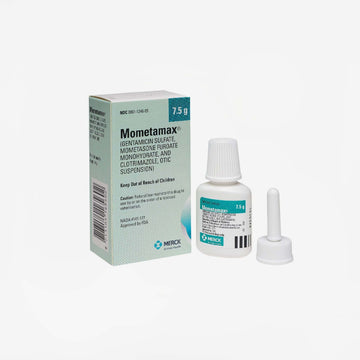Filter by
Mange Medicine for Cats
Our vet-approved selection of mange medicine for cats restores your feline friend's comfort and health. Shop now and get free shipping on pharmacy orders with a Dutch membership.
Frequently asked questions
What are the signs of mange in cats?
What are the signs of mange in cats?
Mange is a fairly common pet skin condition caused by various mites. It often manifests through noticeable symptoms that include:
- Severe itching
- Hair loss
- Redness
- Inflammation of the skin
You might see your cat scratching or grooming excessively, which can lead to sores and scabs. Cats with mange may also appear restless or irritable due to the constant discomfort.
How do cats get mange?
How do cats get mange?
Cats can contract mange through direct contact with other infected animals, such as dogs or other cats, or from environments contaminated with mange mites. These mites can be found in bedding, grooming tools, or even on surfaces where an infected animal has been. Outdoor cats, or those that come into contact with wildlife, are at a higher risk. Additionally, cats with weakened immune systems are more susceptible to developing mange.
There are several types of mange in cats:
- Notoedric mange: Also known as feline scabies, notoedric mange is highly contagious among cats. Commonly affected areas are the ears, face, neck, and sometimes feet.
- Demodectic mange: Demodectic mange isn't as contagious as other types of mange. Localized demodectic mange affects a small area, while generalized demodectic mange is more widespread, affecting larger areas of the body.
- Sarcoptic mange: This type of mange is more commonly seen in dogs but can also affect cats because it's highly contagious. It can cause intense itching, leading cats to scratch so much they open themselves to infections.
- Cheyletiellosis: Also referred to as walking dandruff, this type of mange causes dandruff-like scaling and hair loss.
Otodectic mange: Otodectic mange —or ear mites— is a common form of mange in cats. Ear mites live in the ear canal, causing severe irritation and itching.
What is the best mange medicine for cats?
What is the best mange medicine for cats?
Mange is generally treated using topical, oral, or injectable medications that kill the mites and alleviate the symptoms. The treatment choice depends on the type of mange, the severity of the infestation, and the cat's overall health.
Some of the top mange medicines for cats are:
- Revolution for Puppies & Kittens (Rx)
- Senergy Puppy/Kitten Topical Solution (Rx)
- Revolution for Cats (Rx)
Browse our online pet pharmacy to learn more about these medicines for mange in cats.
Keep in mind that because mange can cause severe skin irritation that makes your cat scratch themself, it can lead to sores on the body that leave your pet open to infections.
If you believe your cat has mange, the best thing you can do for them is to talk to a vet who can effectively treat skin conditions in pets. Schedule a consultation with a Dutch vet today. Dutch members get free shipping on pharmacy orders, so you can rest assured your cat will get the care and treatment they need.
What are the side effects of mange medicine for cats?
What are the side effects of mange medicine for cats?
While mange medicine for cats is generally safe and effective, it can have side effects. Common side effects of topical treatments include:
- Temporary hair loss at the application site
- Mild skin irritation
- A slight residue where the product was applied
Less commonly, some cats may experience gastrointestinal issues, such as vomiting or diarrhea. Contact your vet as soon as possible if your cat shows any side effects.
What happens if mange is left untreated?
What happens if mange is left untreated?
Not treating your pet with medicine for cat mange can lead to severe consequences for your cat's health. Initially, the constant scratching and biting can cause open sores, which can become infected. Over time, the skin might thicken and darken due to chronic inflammation.
Mange can also lead to secondary bacterial infections, which can be more challenging to treat and often require antibiotics. Untreated ear mites can result in hearing loss or damage to the ear canal. In extreme cases, untreated mange can cause significant discomfort that affects your pet's quality of life.


